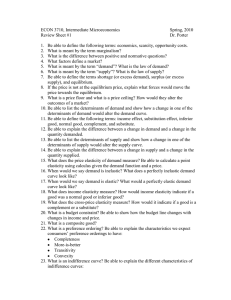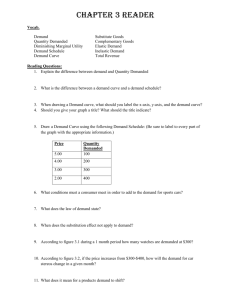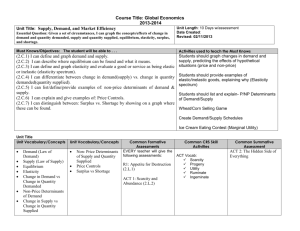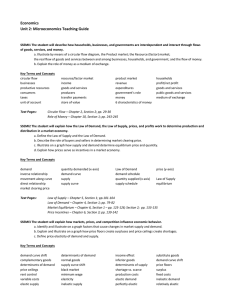REVIEW: UNIT 2: SUPPLY AND DEMAND
advertisement
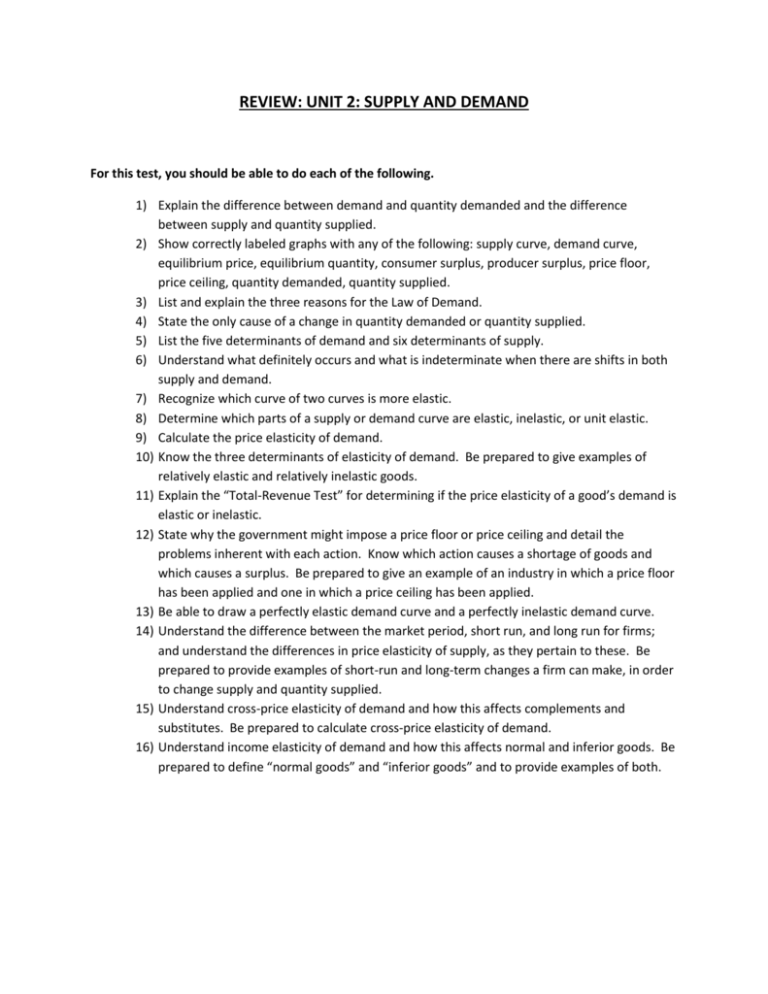
REVIEW: UNIT 2: SUPPLY AND DEMAND For this test, you should be able to do each of the following. 1) Explain the difference between demand and quantity demanded and the difference between supply and quantity supplied. 2) Show correctly labeled graphs with any of the following: supply curve, demand curve, equilibrium price, equilibrium quantity, consumer surplus, producer surplus, price floor, price ceiling, quantity demanded, quantity supplied. 3) List and explain the three reasons for the Law of Demand. 4) State the only cause of a change in quantity demanded or quantity supplied. 5) List the five determinants of demand and six determinants of supply. 6) Understand what definitely occurs and what is indeterminate when there are shifts in both supply and demand. 7) Recognize which curve of two curves is more elastic. 8) Determine which parts of a supply or demand curve are elastic, inelastic, or unit elastic. 9) Calculate the price elasticity of demand. 10) Know the three determinants of elasticity of demand. Be prepared to give examples of relatively elastic and relatively inelastic goods. 11) Explain the “Total-Revenue Test” for determining if the price elasticity of a good’s demand is elastic or inelastic. 12) State why the government might impose a price floor or price ceiling and detail the problems inherent with each action. Know which action causes a shortage of goods and which causes a surplus. Be prepared to give an example of an industry in which a price floor has been applied and one in which a price ceiling has been applied. 13) Be able to draw a perfectly elastic demand curve and a perfectly inelastic demand curve. 14) Understand the difference between the market period, short run, and long run for firms; and understand the differences in price elasticity of supply, as they pertain to these. Be prepared to provide examples of short-run and long-term changes a firm can make, in order to change supply and quantity supplied. 15) Understand cross-price elasticity of demand and how this affects complements and substitutes. Be prepared to calculate cross-price elasticity of demand. 16) Understand income elasticity of demand and how this affects normal and inferior goods. Be prepared to define “normal goods” and “inferior goods” and to provide examples of both.








